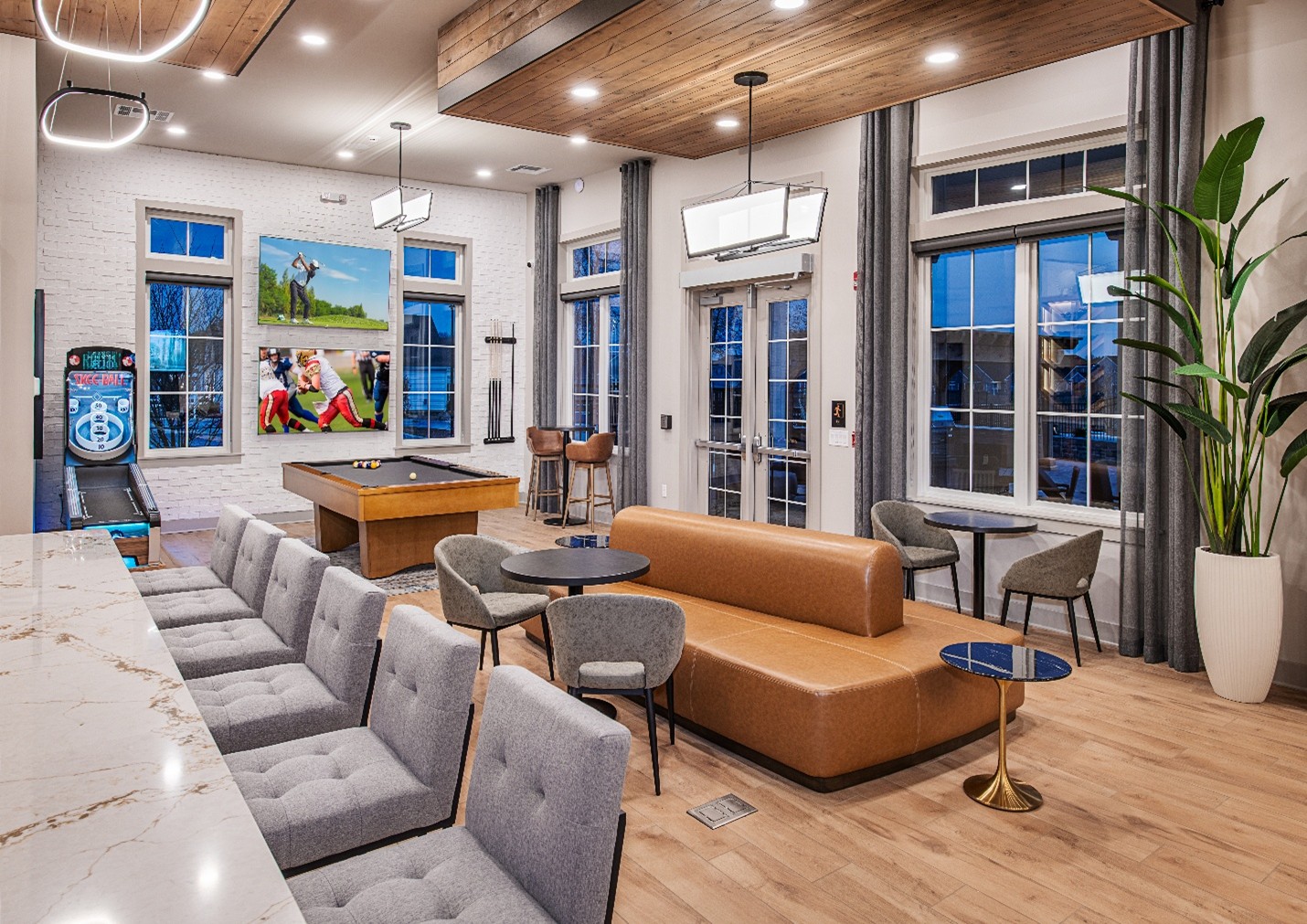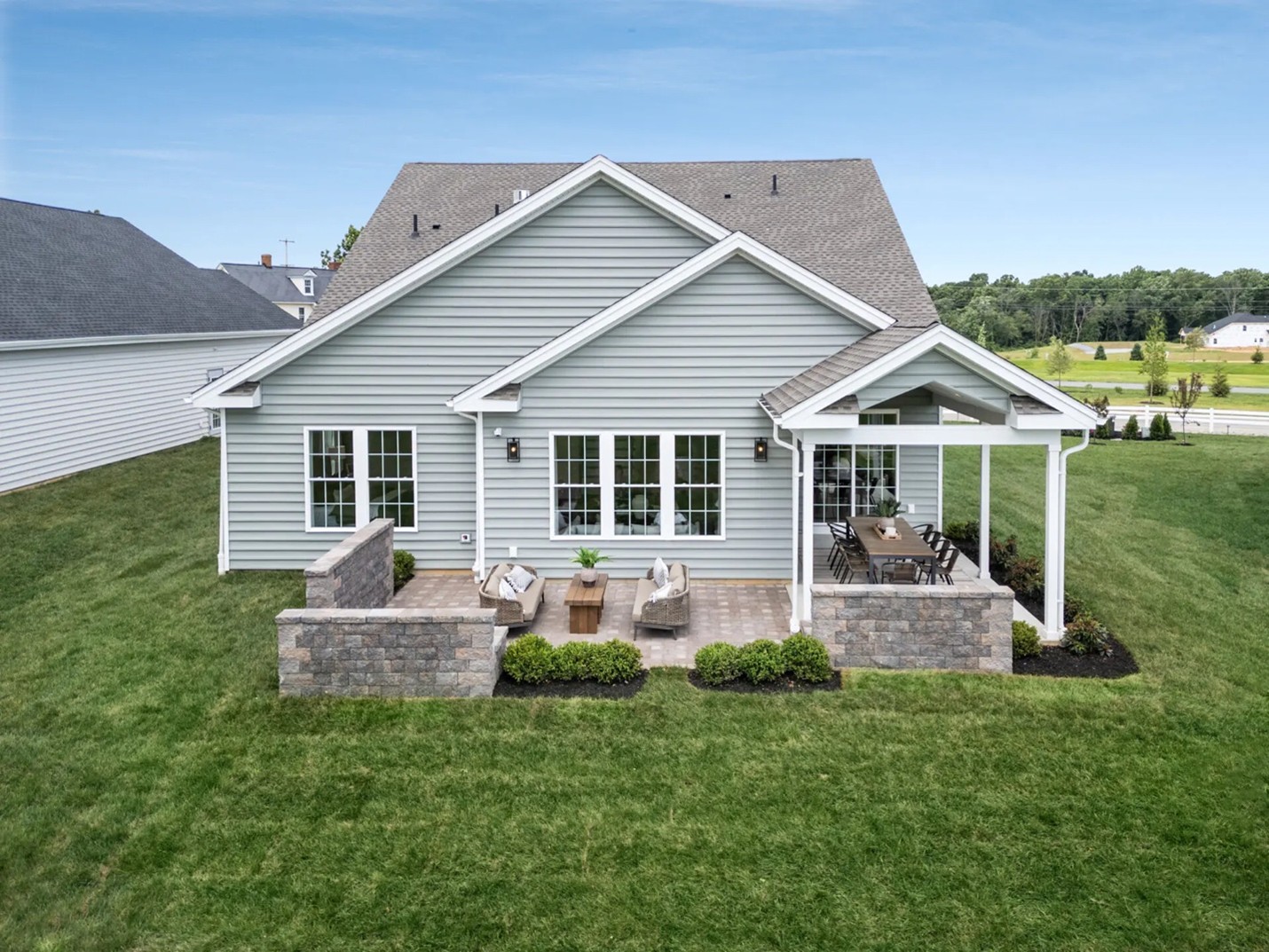
As Baby Boomers dominated 55+ housing trends for decades, Generation X, now entering this niche market, is a powerful force with distinct tastes and expectations. Born between 1965 and 1980, Gen Xers are poised to outnumber Boomers in this segment by 2028.
This generation is shaping the future of active adult communities, prioritizing experience-driven design, technology, and flexibility over more conventional models. The following article highlights what these buyers are demanding in these spaces and what they’ve decided to leave behind.
Gen X seeks meaningful, active experiences. They're not looking to "wind down" - they want vibrant energy. Outdoor recreation is essential: pickleball, bocce, firepits, dog parks and heated pools rank highly among this demographic.
Smaller group-oriented social spaces like café-style lounges and intimate game nights are preferred over grand ballrooms. These preferences reflect a generation looking to blend social engagement and freedom with structure but without rigidity.
Today, Gen X enters this new chapter with energy, purpose, and a desire for homes that reflect their active, forward-thinking mindset. They favor open, adaptable floor plans that offer purposeful spaces - home offices, hobby areas, or comfortable guest quarters.
Practicality matters too, which is why features like open-concept kitchens, ample storage, and dedicated utility spaces are high on their wish lists. This generation also values smart, future-ready design: homes with built-in aging-in-place features such as zero-step entries, wide hallways, and accessible bathrooms.
These design elements ensure comfort now while accommodating changing needs down the road. For Gen X, this is a time about leveling up in a community that fits how they want to live, work, and connect.
Technology and comfort go hand in hand. Gen Xers also expect modern convenience, and communities are rising to the occasion by integrating features like smart thermostats, voice-controlled lighting, home security systems, and energy-efficient appliances as standard offerings, not luxury upgrades.
But it’s not just about gadgets; it’s about living smarter. Gen X isn’t interested in downsizing in the traditional sense. Instead, they’re looking for “right-sized” living - homes that feel spacious, functional, and flexible without unnecessary excess. Many prefer single-family residences with three or more bedrooms, offering space for home offices, guests, or multigenerational visits.
These buyers are ready to invest in properties that align with their lifestyle goals - not just their age. They want homes and communities that reflect their values: connected, efficient, and designed for how they truly live today.
As the first generation to grow up with personal computers and early digital technology, Gen X brings a unique blend of tech-savviness and eco-conscious values to the over 55 housing market. They’re not just comfortable with smart home tech - they expect it.
This generation actively seeks out homes equipped with energy-efficient appliances, and sustainable building materials. Their interest goes beyond convenience; it reflects a desire to live responsibly and reduce their environmental footprint.
For many in this age bracket, downsizing isn’t about sacrificing - it’s about streamlining. They gravitate toward minimalist, efficient living spaces that offer quality over quantity, with design choices that support both personal wellness and planetary health. For Gen X, a home isn’t just a place to live - it’s a statement about how they want to live.
This generation of buyers are also seeking more than just beautiful homes - they’re looking for lifestyle experiences that blend indoor comfort with outdoor living. They value walkable neighborhoods, scenic green spaces, and access to well-maintained trails just steps from their door.
Thoughtfully designed outdoor amenities like firepits and community gardens along walking paths encourage year-round activity and spontaneous social interaction. These features align perfectly with Gen X priorities: staying healthy, fostering community, and enjoying spaces that feel open, vibrant, and alive. For these individuals, the ideal community is one where the boundaries between home, nature, and neighbors naturally disappear.

As members of the "sandwich generation," many Gen Xers are balancing active roles - caring for aging parents while still supporting adult children or hosting extended family functions. This reality is reshaping expectations for community living.
Today’s buyers are looking for community living that offers flexibility - designs that make it easier to accommodate multigenerational visits, without sacrificing privacy or comfort. Within adult communities, this shift is driving demand for floor plans and amenities that support connection, care, and independence under one roof.
Rather than gravitating toward large event spaces or formal venues, today’s active adults are drawn to inviting, lifestyle-oriented amenities - think sunlit reading nooks, community kitchens for shared meals, artisan workshops, and casual gathering spots that foster authentic connection and day-to-day enjoyment. In response, many age-restricted communities are incorporating board game libraries, casual pop-up events, coworking-style spaces, and flexible gathering areas that can easily shift from a book club to a trivia night. These types of environments reflect what Gen X values most: authenticity, spontaneity, and spaces that feel like an extension of their personal lifestyle.
Generation Xers often seek homes with smart, efficient designs that promote ease of movement and long-term livability, allowing them to maintain autonomy as they age. At the same time, they appreciate thoughtfully designed communal areas that encourage casual interaction and foster a sense of neighborly support, reflecting their desire for connection without sacrificing personal space.
Financially, Gen X buyers are both cautious and strategic, shaped by their experiences with economic fluctuations. They tend to approach home purchases with a blend of emotional and practical considerations, favoring properties that offer long-term value, whether through affordability, desirable location, or equity-preserving amenities. Many come to the table with substantial savings or home equity, making financing optional rather than essential. As a result, they focus heavily on the total cost of ownership, placing high value on the community as a whole.
With a life marked by independence, responsibility, and pragmatism this generation of homebuyers seeks community living that reflects these values. More spacious yet efficient homes, meaningful amenities, flexible work and living spaces, and modern aesthetics all speak to their needs.
For the 55+ age group, approaching retirement is an evolving journey - not a final destination. They want homes that are adaptable, social yet self-reliant, and rooted in convenience and connection. Communities that can meet these needs means winning the next generation of active adult buyers.